Xiaomi 13 vs 13 Pro vs 13 Ultra: Which of Xiaomi's New Flagships Should You Buy?

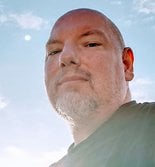
Read in other languages:
After the Xiaomi 13 and the Xiaomi 13 Pro, the Chinese manufacturer also presented its top model for 2023: The Xiaomi 13 Ultra. We naturally have to include the flagship with a Leica camera in our comparison. So, we look at the three smartphones in this article, tell you the similarities, but also the differences between the Xiaomi 13 and Xiaomi 13 Pro in the detailed NextPit comparison.
The devices that were shown as global versions at MWC already offer quite a bit of what we imagine to be a top smartphone. However, Xiaomi raised the bar a bit higher with the Xiaomi 13 Ultra. Reason enough to directly take a look at the technical specifications in comparison:
Comparison: Xiaomi 13 vs. Xiaomi 13 Pro
| The new flagship phones from Xiaomi | ||||
|---|---|---|---|---|
| Product | ||||
| Image |  |
 |

|
|
| Display | 6.36-inch OLED 2,400 x 1,080 pixels 120 hertz refresh rate |
6.73-inch OLED 3,200 x 1,440 pixels 1-120 hertz LTPO refresh rate |
||
| SoC | Qualcomm Snapdragon 8 Gen2 | |||
| Memory | 8 / 12 GB LPDDR5X RAM 128 / 256 / 512 GB UFS 4.0 ROM |
12 / 16 GB LPDDR5X RAM 256 / 512 GB / 1 TB UFS 4.0 ROM |
||
| microSD | ❌ | |||
| Software | Android 13 | MIUI 14 | |||
| Rear camera | Main camera: 50 MP, f/1.8, 1/1.49 inch Sony IMX800, OIS Ultra-wide angle: 12 MP, f/2.2 Telephoto zoom: 10 MP, f/2.0, OIS, 3.2x zoom |
Main camera: 50 MP, f/1.9, 1 inch Sony IMX989, OIS Ultra-wide angle: 50 MP, f/2.2 Telephoto zoom: 50 MP, f/2.0, OIS, 3.2x zoom |
Main: 50 MP, f/1.9, 1 Zoll Sony IMX989, OIS Ultra-wide-angle: 50 MP, f/1.8, Sony IMX858 3x telephoto: 50 MP, f/1.8, OIS, Sony IMX858 5x telephoto: 50 MP, f/3.0, OIS, Sony IMX858 |
|
| Front camera | 32 MP, f/2.0 | |||
| Battery | 4,500 mAh 67-Watt Quick Charging 50-Watt Wireless Charging 10-Watt Reverse Charging |
4,820 mAh 120-Watt Quick Charging 50-Watt wireless charging 10-Watt Reverse Charging |
5,000 mAh 90 Watts wired charging 50 Watts wireless charging 10 Watts reverse charging |
|
| Connectivity | 5G, LTE, WLAN 802.11 a/b/g/n/ac/ax, Wi-Fi Direct (2.4 GHz + 5 GHz), Bluetooth 5.3, NFC |
|||
| IP certification | IP68 | |||
| Colors | White, Black, Flora Green, Mountain Blue | Ceramic White, Ceramic Black, Flora Green (Ceramic), Mountain Blue | Black, Olive Green (China-only: White) |
|
| Dimensions and weight | 152.8 x 71.5 x 8 mm 185/189 g |
163 x 74.6 x 8.38 mm 210/229 g |
163.18 x 74.64 x 9.06 mm 227 g |
|
| Review |
|
|
|
|
We've already had the opportunity to test the global version of the Xiaomi 13 Pro and also the Xiaomi 13 in detail—and we've had a bit of hands-on time with the Xiaomi 13 Ultra as well, after all. Once our in-depth test with the Xiaomi 13 Ultra is complete, we'll update this post based on our three test results.
- Read also: The best Xiaomi smartphones 2023
Table of contents:
- Display and design
- Performance and connectivity
- Cameras and image quality
- Software and updates
- Battery and quick charging
- Pricing and availability
- Conclusion
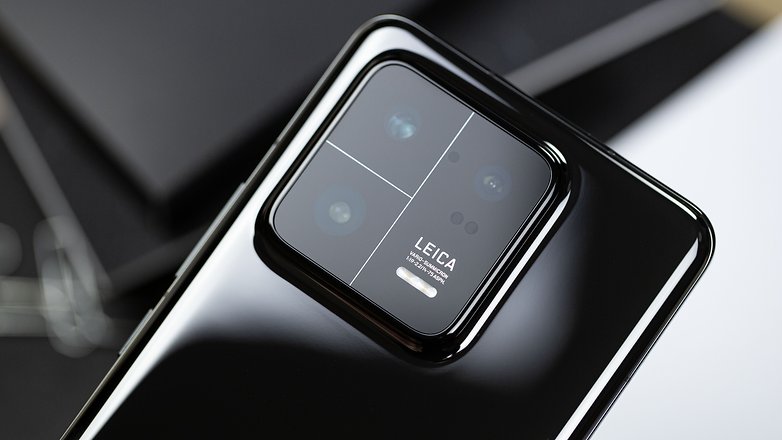
Display and design
Very obvious at first glance: The Xiaomi 13 and Xiaomi 13 Pro differ in the size of the display. Once we are dealing with a display diagonal of 6.36 inches, with a resolution of 2,400 x 1,080 pixels. The panel of the Pro device measures 6.73 inches diagonally and offers a higher resolution of 3,200 x 1,440 pixels. The Xiaomi 13 Ultra shares resolution and size with the Pro model, but a quick glance at the back immediately shows that both devices are quite different visually.

Another design difference between the Xiaomi 13 and the Pro variant: The base model has a flat panel, metal frame. and, depending on the color, glass or "Nano Tech" back. The latter is only available on the blue versions of both models and the coating is supposed to resemble leather. The Pro, on the other hand, features ceramics - except for the Nano Tech variant - and a curved display at the front. The three available colors of the Ultra model - black, white, and olive green - also feature the aforementioned Nano-Tech coating.
The top model offers a leather-like look on the back, but the real eye-catcher is the huge cyclops eye that was created in partnership with Leica and houses the quad-cam. This brings back memories of the Xiaomi 12S Ultra we reviewed in 2022, which unfortunately did not officially make it outside of China.
Fortunately, all three versions are now IP68-certified. The Xiaomi 13 measures 152.8 x 71.5 x 8 mm and weighs 189 grams, or a few grams lighter in the Nano skin variant. The Xiaomi 13 Pro is logically much larger at 163 x 74.6 x 8.38 mm and also weighs more (210 and 229 grams). The dimensions of the Xiaomi 13 Ultra deviate only minimally with 163.18 x 74.64 x 9.06 mm and 227 grams.
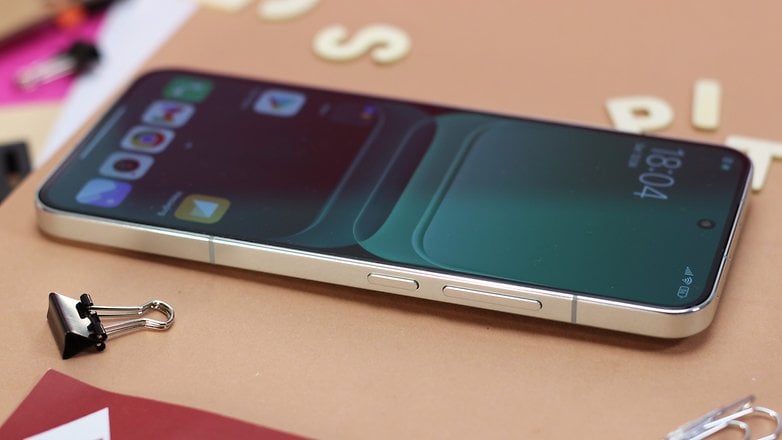
The display houses the 32 MP selfie cam in the punch hole on top and the fingerprint sensor in the lower area. The Xiaomi 13 and 13 Pro are fabulously bright with a peak brightness of 1,900 nits and images are repeated at up to 120 hertz. However, thanks to LTPO technology, the Pro model is more finely adjustable and thus more energy-efficient. The Ultra (1,300 nits) even reaches 2,600 nits in direct sunlight! You might want to look at the sun rather than the brightly lit display of the Xiaomi 13 Ultra.
As for the rest of the design, all variants are like each other: There are stereo speakers, a volume rocker, and power button on the right in each case, as well as a SIM card slot that accommodates two nano-SIM cards. You will not find a jack and a microSD slot on all three models.
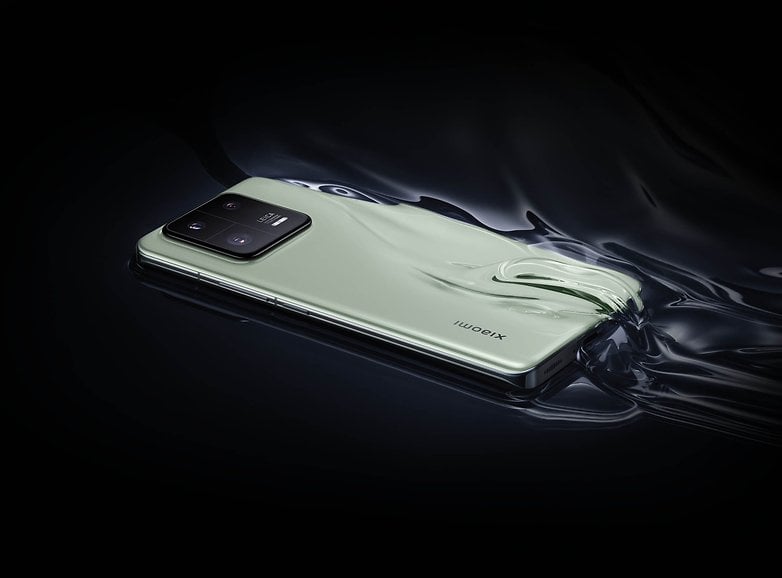
Performance and connectivity
All three devices also march in lockstep when it comes to performance. They are powered by Qualcomm's brand-new Snapdragon 8 Gen 2! The SoC is manufactured in a 4nm process and promises a decent performance boost compared with the predecessor. We can be curious about the heat development of this flagship SoC.
The storage options are also identical, at least for the base models: There is a choice of 8 or 12 GB LPDDR5X RAM, as well as 128 / 256 / 512 GB UFS 4.0 storage, which you cannot expand. Thus, we have handsets in both the small and the big brother of the series that can hardly run with power and that simply could not be much better equipped.
The Xiaomi 13 and the Xiaomi 13 Pro have already proven themselves in the benchmark tests. For comparison in the following table, we have used the beastly China-only camera smartphone Xiaomi 12S Ultra as well as the iPhone 14 Pro. As soon as the Xiaomi 13 Ultra has been tested, we will of course update this table accordingly.
| Xiaomi 13 Pro | Xiaomi 13 | Xiaomi 12S Ultra | Apple iPhone 14 Pro | |
|---|---|---|---|---|
| 3D Mark Wild Life | Too powerful | Too powerful | Too powerful | Too powerful |
| 3D Mark Wild Life Stress Test | Best loop: 13232 Worst loop: 10402 |
Best Loop: 12914 Worst loop: 10432 |
Best Loop: 8896 Worst loop: 3958 |
Best loop: 9599 Worst Loop: 8121 |
| Geekbench 6 | Single: 1403 Multi: 5106 |
Single: 1481 Multi: 4310 |
Single: 1322 Multi: 4303 |
Single: 1885 Multi: 5406 |
Connectivity is also unanimous: The devices support WiFi 6, NFC, Bluetooth 5.3 and also support the LDAC and LHDC codecs.
Cameras and picture quality
That Xiaomi ensures enough distance between the Xiaomi 13 and the Xiaomi 13 Pro is again seen in the installed cameras. We find a triple array on the back, consisting of a main camera, ultra-wide-angle and telephoto zoom. Xiaomi has again teamed up with Leica for this.
The latter also applies to the Ultra, but thanks to two telephoto cameras, we have a quad-cam here—which is not the only difference in terms of cameras.
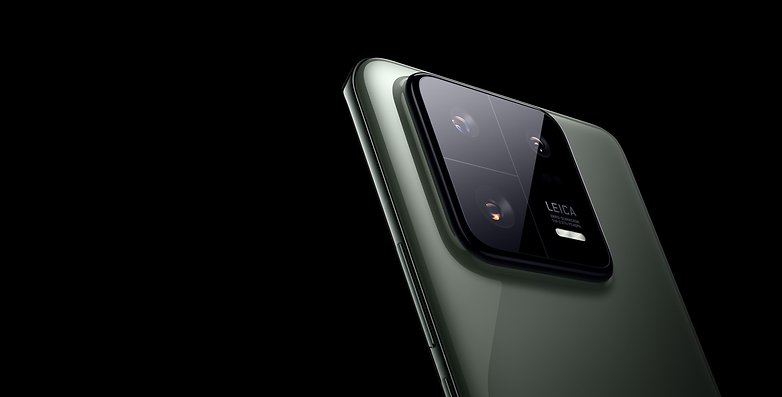
While the 50 MP camera in the base model is based on the 1/1.49 inch Sony IMX800, the Pro and Ultra both use the 1 inch Sony IMX989 image sensor. Images are optically stabilized in both, as is the 3.2x telephoto zoom in all devices and the 5-telephoto zoom exclusively in the Xiaomi 13 Ultra.
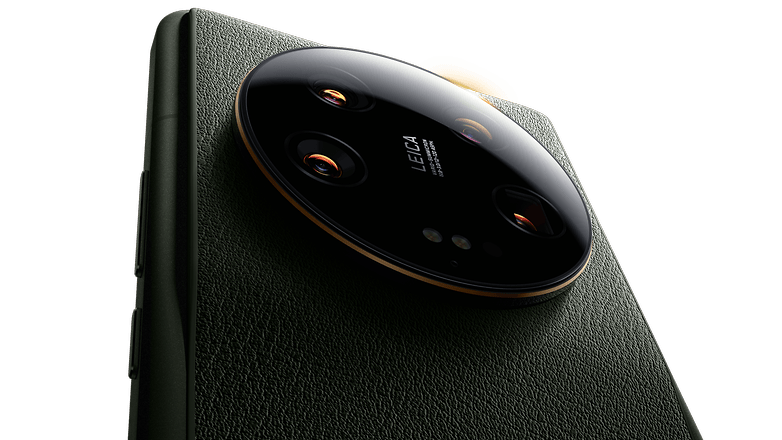
There are differences between the base and Pro models in the available megapixels of the second and third camera, respectively: 12 MP (ultra-wide) and 10 MP (telephoto zoom) are on the Xiaomi 13, while the larger model offers 50 MP each. Furthermore, only the ultra-wide-angle in the base device does without autofocus. The Xiaomi 13 Ultra is also well equipped beyond the main camera with three IMX858 sensors from Sony with 50 MP each.
But that is not the only reason why the Chinese manufacturer's new flagship is preparing a serious attack on the camera smartphone crown. Xiaomi combines the already outstanding quality of the Sonxy IMX989 sensor with a variable aperture. No less than four great camera sensors, the Leica partnership, and strong software-based support on top of that make us hope for the best smartphone camera we have ever seen in the Xiaomi 13 Ultra.
- Will Xiaomi take the camera crown with the Xiaomi 13 Ultra? These are the best camera smartphones in 2023.
Finally, we should mention that we find a selfie shooter with 32 MP in each case at the front. Once again, we will update this article as soon as we have tested the Xiaomi 13 Ultra. Let's now have a quick look at the sample pictures of the Xiaomi 13 and 13 Pro, respectively:
Sample photos from the Xiaomi 13:
Sample photos from the Xiaomi 13 Pro:
Software and updates
This section is quick: Both phones ship with Android 13 based on MIUI 14. This means that MIUI 13 (review) will soon be obsolete for Xiaomi, and we will have to deal with a new overlay from the Chinese. We can therefore look forward to new features, even though MIUI 14 does not exactly look completely new in our quick test.
At least MIUI 14 uses less storage space and the number of non-removable apps has been reduced to eight. The software is not as resource-hungry as the predecessor, there are new widgets, and the overall performance is smoother.
Xiaomi always keeps a low profile when it comes to updates. However, we know from the past that the company offers at least three Android versions for its flagships, so you can expect two major updates. MIUI itself gets four updates and you will get the security patches for at least three years.
Battery and quick-charging
Considering the size differences between the three devices, it is not surprising that Xiaomi installs batteries with different capacities. The capacity of the Pro is 4,820 mAh, while the Xiaomi 13 has a battery with 4,500 mAh. The battery of the Xiaomi 13 Ultra tops the Pro once again with its 5,000 mAh.
However, the Pro has an edge in another area, namely in the charging speed. The 67 watts in the base model are really okay, but the 120 watts in the Pro are much faster. Even the Ultra with its "only" 90 watts cannot quite keep up with that. The rest of the battery specs are identical, though: All three support reverse charging with 10 watts and wireless charging with 50 watts each.
In our extensive test, the Xiaomi 13 Pro lasted for a full 13:07 hours before it dropped below the 20% mark for the remaining battery power. The Xiaomi 13 even lasted 14 hours and 38 minutes until it landed at 20 percent. In return, it takes a bit longer for a full charge with about 48 minutes. The Xiaomi 13 Pro's mighty 120 watts catapult the device from 0 to 100 in just 20 minutes. The Xiaomi 13 Ultra should be somewhere in between.
Prices and availability
The Xiaomi 13 and Xiaomi 13 Pro have been available in stores since March 8. Fans of the Xiaomi 13 Ultra, on the other hand, will have to wait a little longer. The smartphone, which was launched in China in April, will not reach Europe until June.
| Prices and storage variants | ||||
|---|---|---|---|---|
| Xiaomi 13 Ultra | ||||
| 8 GB + 256 GB | 999,90 Euros | ➖ | ➖ | |
| 12 GB + 256 GB | ➖ | 1.299,90 Euros | ➖ | |
| 16 GB + 512 GB | ➖ | ➖ | ? | |
Although there are various storage options for the Xiaomi 13 Ultra, only the configuration with 16 GB of RAM and 512 GB of non-expandable storage mentioned in the table will probably be available Globally. How much will we have to pay for it? We do not know yet, but the device will be offered for 6,499 yuan in China. That is the equivalent of about €862/$945, just don't expect western prices close to the Chinese ones...
The weaker equipped Xiaomi 13 Pro already costs 1,300 Euros (approx. $1400), so get ready for another very expensive smartphone.
In China, there is also a limited edition of the Xiaomi 13, which is only the largest storage variant with 512 GB of storage and 12 GB of RAM. In contrast to the "normal" models, the limited edition is available in four bright colors.
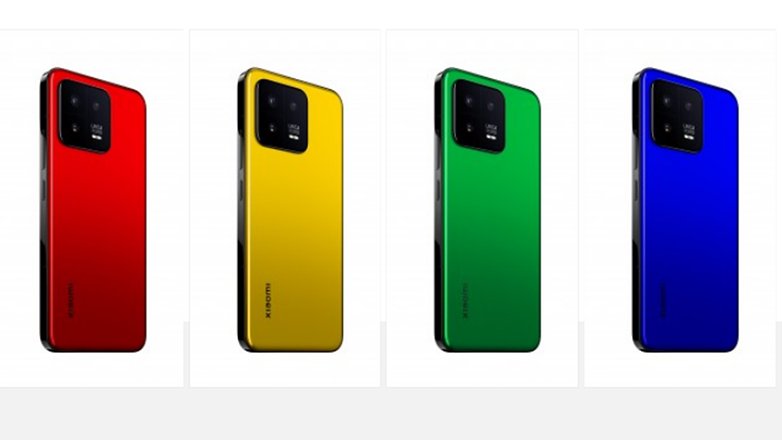
Conclusion
Xiaomi does not make the mistake of configuring the devices too similarly this time and generally makes many right choices. If you want the best cam, the fastest charging, and the more energy-efficient display, you have to reach for the Pro or Ultra. If all that is not necessary, the base model is also sufficient for everything you can do with a smartphone.
The "small" vanilla model is already a top device, the Pro a real premium flagship—and the Ultra possibly the best Android smartphone at the moment. While we have tested the first two with four stars each, we still have to test the Xiaomi 13 Ultra. We can promise you this test very soon and then we will also know whether the Xiaomi 13 Ultra is a real contender for the smartphone throne in 2023.
What is your opinion? Have you been waiting for the Ultra model, are the cheaper models enough for you - or can you not make friends with Xiaomi at all?
Article updated on April 18th after the Xiaomi 13 Ultra launch and NextPit's hands-on impressions



































































































